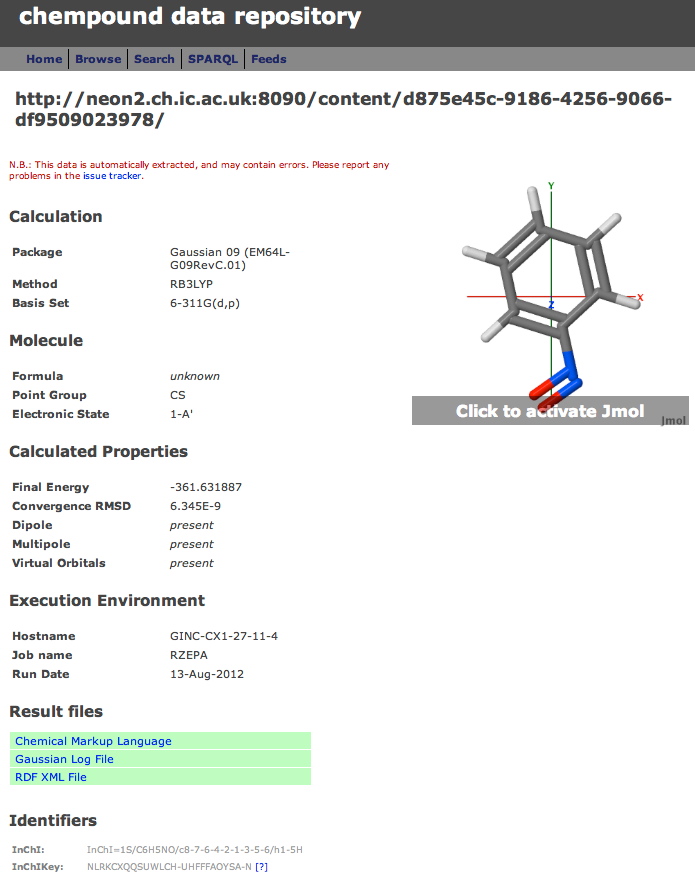A third digital repository has been added to the two I described before. Chempound is a free open-source repository which (unlike DSpace and Figshare) was developed specifically for chemistry.
It carries more semantic information (in the form of an RDF triple declaration), which allows SPARQL queries on the entry to be performed.
Our original DSpace repository is also being tweaked to allow additional information to be added to existing entries; in particular if an entry is linked to in a journal publication, the DOI of that article is inserted into the DSpace descriptions. It is also relatively simply to duplicate the information in one repository by re-depositing it into another. Thus it becomes feasible to clone the information about the 600+ entries in our DSpace that have been subsequently published in peer-reviewed journal articles, thus adding a measure of confidence to their provenance.
To compare how the three repositories carry information about the same molecule, invoke any of the links below:

I just received an email from James Moses. It summarises a report on Institutional Digital Repositories (you have to pay to get this). Two of the conclusions sent to me in the email (no disclaimer says I cannot include this here) are:
“• The mean annual budget of the (38) repositories in the sample is $84,240.
• The mean number of man-hours of librarian and librarian technician labor required per year to operate and market the digital repository is 3,186.5”
Wow, if that were indeed the true cost of running a repository for chemistry, then I think the small number we have would continue to be just that, small!
It would nevertheless be interesting to see what the cost of say starting up and operating a Chempound repository would be. I fancy very significantly less than the figures above might suggest.
[…] Digital repository entries […]